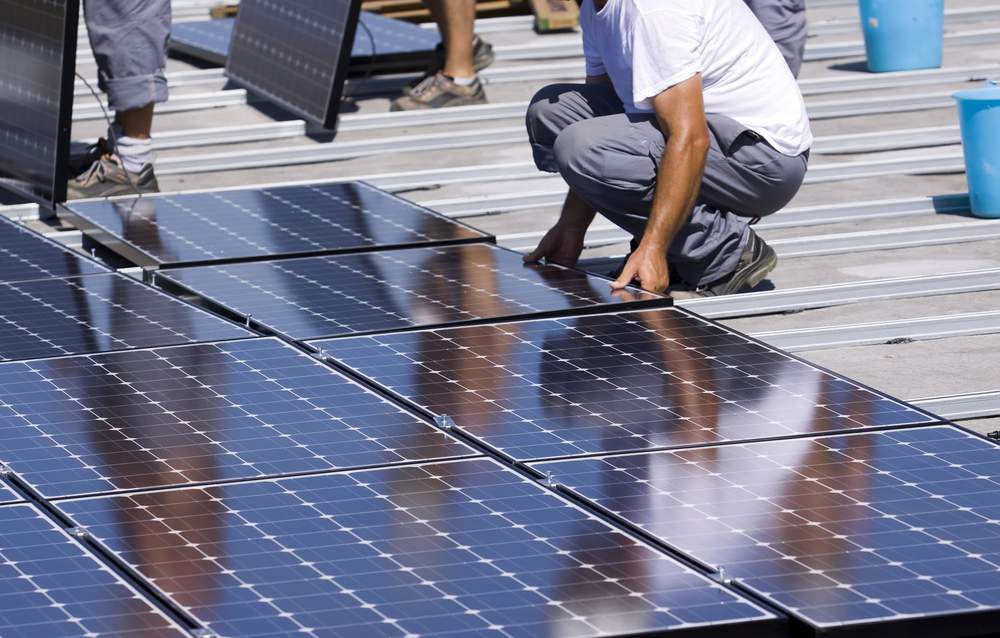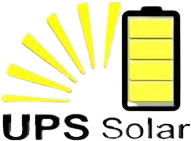When you think of solar panels, we’re betting you conjure up images of a sloping roof with panels fixed on firmly to capture the sun’s energy at an optimum angle. However, the system can work just as effectively on flat roofs as they do on slopping ones. Depending on the type and size of the system you choose, flat roof solar panels can actually work more effectively than some sloping ones. So, whether you are interested in flat roof solar panels for a domestic property or commercial premises, read on to find out the advantages of flat roof solar panels and why they are such a great investment.
Why Choose Flat Roof Solar Panels?
In some cases, the choice of which type of solar panels to invest in is made for you – if you only have space for them on a sloped or flat roof, for example. However, if you do have some flexibility, it is well worth looking into flat roof solar panels. Here are the advantages of flat roof solar panels and why they can be a winning solution.
1. Versatility in How They Are Installed
When you fit solar panels to a sloping roof, you need to work with the existing angle and pitch of the roof. This is not the case for flat roof panel installations. As there is no pitch, the system can be angled as you choose, in order to capture the most sun and work as efficiently as possible. A good angle for solar panels is somewhere between 30 and 60 degrees.

Panels can go in the middle of the flat roof or to either side with no obstacles in their way. Installers use specially designed brackets to fit the flat roof solar panels securely and then angle them exactly as they need to. If there are concerns over whether they will withstand heavy weather conditions, metal frames or ballast can be added for extra support and weight.
2. Self-Cleaning and Safer Maintenance
One concern that many people have about installing solar roof panels is how they can keep them clean and free from damage and general wear and tear. The UK sees a lot of rain, which helps the panels to ‘self-clean’ as the water runs down them. This is still possible on flat roof solar panels, as they can be angled slightly to allow the rain to do its work. Maintenance and repairs can often be easier on flat roofs too, as there is generally enough space around the panels for someone to stand safely for as long as they need when checking and working on the panels.
3. Better Looking Configurations
Solar panels can be hard to hide on a sloping roof, as they will stand out visually from many angles. When installing them on a flat roof, however, the angle can be adjusted so it is less intrusive to the surrounding views. They are more discreet from street level and do not require homeowners to remove attractive tiles or terracotta embellishments from a sloping roof. Flat roofs tend to be fairly practical and simple in design, making the addition of a flat roof solar panel less of an intrusion. In fact, some modern, industrial flat roof designs can positively benefit from having stylish flat roof solar panels installed on top of them.
4. More Wind-Proof
We have already mentioned how the rain can still help keep flat roof solar panels clean if they are angled up enough to allow the water to run down them. Conversely, however, the wind can be far less useful to solar panel systems, especially if they are fitted to sloping rooftops that are too tall to withstand high winds without sustaining damage. Choosing your own angle for a flat roof can enable you to adjust the slant to account for high winds and keep the system safer and less prone to storm damage.
5. Easy Access to Green, Renewable Energy
Flat roof solar panels are just as effective as sloped roof configurations in providing renewable, sustainable electricity direct from the sun’s rays. They are made up of the same type of photovoltaic cells, which capture the solar energy before the system converts it into useable electricity for the home or workplace. An additional battery for solar power storage can also be connected to the system so that any surplus electricity that is not used right away can be stored and used later. For example, when the sun’s rays are absent at night, or weaker or obscured during a cloudy or dull day.
Exploring different types of solar panels for your property can help you make an informed decision that suits your specific needs. For example, solar roof tiles or photovoltaic roof tiles offer a more seamless look, blending in with your existing roof design. These modern solar panel roof tiles are an excellent choice for those who want the complete benefits of solar energy without the prominent appearance of traditional panels. When selecting the right solar panel system, consider factors such as solar panel efficiency, which varies between different models, and the solar panel efficiency calculation, which will help you determine the best solar option for your energy needs. Finding solar panel engineers or solar system installers can help maintain your system efficiently. Moreover, government funding solar panels through schemes and grants can significantly reduce the overall cost of switching to solar energy.
In addition to installation, solar panel maintenance is crucial to ensure optimal performance. Regular servicing is necessary to prevent common issues and extend the lifespan of your system. Solar panels servicing includes cleaning, inspections, and timely repairs to address any potential problems. For those considering backup energy solutions, solar with battery storage can be an invaluable addition. This setup not only stores excess energy but also provides power during outages, ensuring continuous energy supply. When evaluating your options, consider solar panel and battery package deals that offer comprehensive solutions, combining the expertise of solar panels installers with reliable solar power battery storage systems, tailored to your specific needs.
Additionally, if you’re exploring larger-scale projects, such as installing solar panels on both sides of the roof, it’s important to consider the optimum angle for solar panels to maximise energy production. Flat roof mounted solar panels offer flexibility, as you can choose the optimum solar panel angle for maximum sunlight exposure. Getting solar panel quotes can help you compare different options, whether you’re interested in domestic or commercial solar panels, storage or solar inverter systems. Also, don’t overlook the potential benefits from government solar scheme initiatives or the government grant for solar panels, which can significantly offset installation costs.

